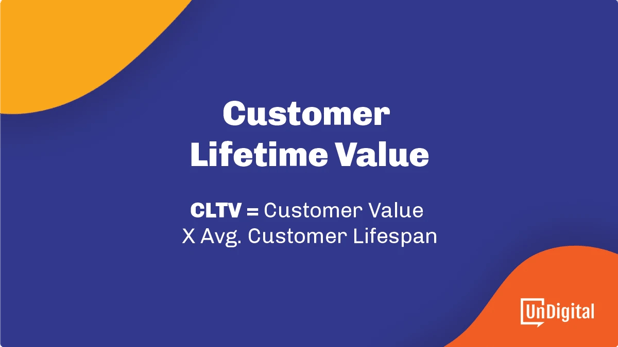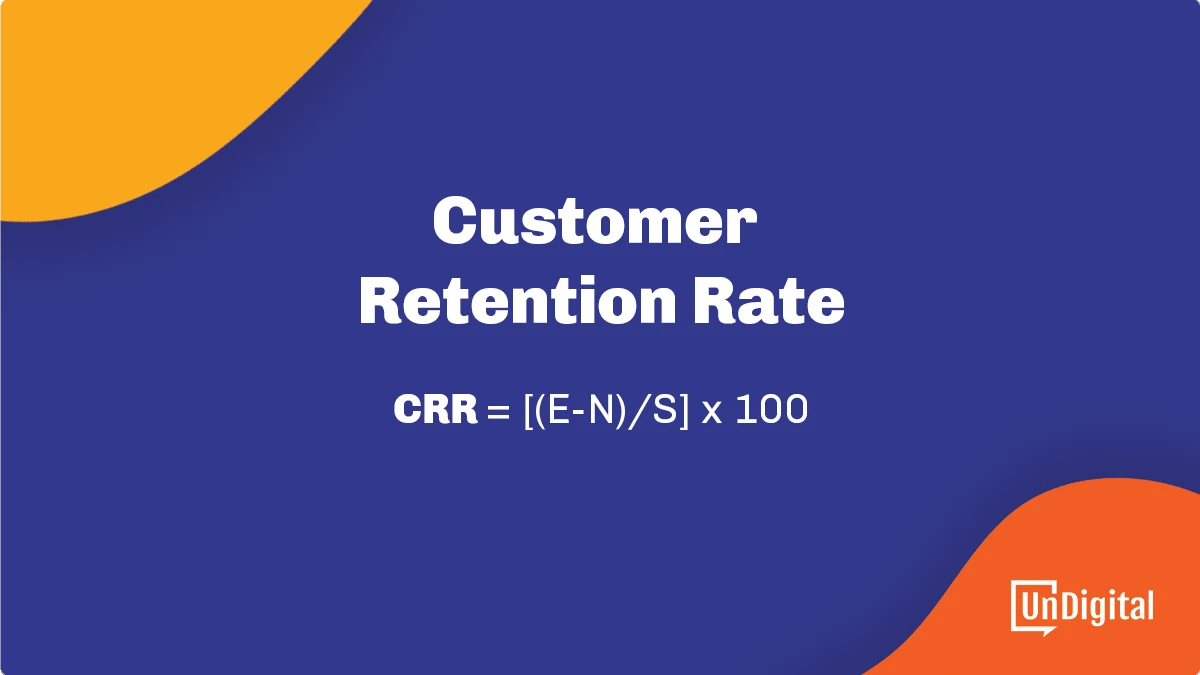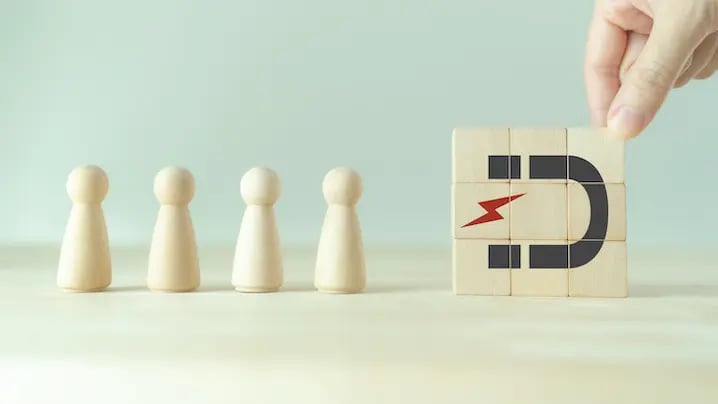An Introductory Guide to Customer Retention
The cost of acquiring a new customer is five to 25 times more expensive than retaining one of your existing clients. For that reason alone, customer retention may be the most critical factor in a company's long-term success.
In a rapidly-evolving market where 66% of consumers expect companies to understand their unique needs and 52% expect interactions to be personalized, it's no wonder businesses struggle to maintain healthy retention rates as their organization takes on more clients.
To make matters worse, customer-facing teams don't always have the support and buy-in they need from other departments to keep your retention rate high.
So what is retention? How does it work? And—perhaps most significantly—who is involved?
| An Intro to Customer Retention |
What Is Customer Retention?
Customer retention is the ability of an organization to keep its customers over time. It is the process of engaging existing customers to persuade them to continue buying your products or services and preventing them from switching over to competitors. This metric allows businesses to evaluate sales growth and long-term profitability.
In a subscription business model, customer retention guarantees a steady stream of revenue without the cost of acquiring new customers. In contrast, a transactional revenue-based model generates its income from sales. Regardless of the type of business, customer retention enhances a company's reputation and brings in more revenue.
No matter what stage your business is at, it pays to invest in customer relationship management. Many businesses underestimate the value of existing customers and instead spend a huge amount of resources to bring in new customers. They fail to realize that by providing better services, products, or benefits, repeat customers can help maintain their customer base and increase loyalty.

Who is Responsible for Retention?
Everyone in your company has a role to play in customer retention and success. Customers likely experience your brand through a variety of touchpoints and team members. As such, there is no person (or even department of people) who could adequately support customer retention independently.
While this responsibility often falls on the shoulders of Client Success, the reality is that they are only one piece in a large puzzle. In fact, before your customer even speaks with someone on your CX team, the factors that determine whether you can retain them long-term have likely already been decided. That's why everyone in your organization needs to be trained to support and sustain your Client Success efforts
Let's have a look at two examples where departments outside of Client Success can—and likely do—impact customer retention from 10,000 feet.
| Marketing | What you say about your product sets the customer's expectations. The "guarantee" on your homepage is great at generating new leads but it also creates impossible standards for your client-facing teams down the line. Solve: Listen to the feedback you get from every department on your finalized marketing messaging. If it isn't true or if it causes problems, it's time to develop a new message. |
| Sales |
Similarly, your sales department probably makes a bonus when a new client converts so they are motivated to do one thing --- sell. That means they may avoid being candid about your offering and tell customers whatever adds new sales. Solve: You already pay the team when they sign a client. What if you paid them an additional bonus after the client reaches a predetermined milestone like "one year of active service" or "positive product feedback received." This motivates your reps to sell responsibly and participate in understanding client retention factors. |
If you want your company to retain customers, every other department needs to understand how their activities impact the customer's experience. You'll also need to develop opportunities for collaboration. Retention isn't just about a great Customer Experience department. It's about fostering a company-wide culture centered on improving the customer's experience.
No matter which department they're in, everyone needs to think of themselves as supporting the Customer Experience team.
So let's say you've got everyone's attention and they're all ready to support your CX team in retaining customers, why would that be such a huge win for you?
Customer Lifetime Value
Customer Lifetime Value (CLV) is a key performance indicator (KPI) of customer retention. It measures the average amount of revenue each customer brings to your business.
Repeat customers have a higher value than first-time buyers based on the resources expended to acquire them. CLV can help optimize resource allocation to better engage your loyal customers. This way you can build long-term profitability and achieve sustainable business growth.
Why is Customer Retention Important for Businesses?
Research conducted by the Center for Retail Management at Northwestern University indicates that up to 15% of a business’s most loyal customers account for 55% to 70% of a company’s total sales. Here are a few more reasons why retaining loyal customers is beneficial to the overall success of a business:
- Returning customers are more inclined to make more purchases because they have established trust in your brand.
- Repeat customers guarantee a higher return on investment (ROI) than acquiring first-time customers. This requires a conscious effort on the business's part to cultivate a strong customer base.
- Businesses can leverage customer data to gain a competitive advantage. Surveys and reviews are great ways to fine-tune the way a company operates. It helps increase visibility, provides valuable insights and enhances customer experience, all of which are vital to business growth.
- High-quality client referrals help companies promote their brand and acquire qualified leads.
- Engaging existing customers requires fewer resources and significantly reduces the cost of acquisition (CPA).
How to Calculate Customer Retention
Use this formula to calculator customer retention:
[(number of customers at the end of the period - number of new customers acquired during the period) / number of customers at the start of the period] X 100% = CRR

Simply subtract the number of new customers (N) from the total number of customers at the end of the period (E). Then divide the difference by the number of customers at the beginning of the period (S). Next, multiply by 100 to determine the percentage of customers the company has retained over a given period.
Strategies to Boost Customer Retention
Poor customer service is one of the main causes of loss of customers (otherwise known as customer attrition) and affects overall business performance.
Establishing a strong customer relationship is fundamental to developing successful customer retention strategies. Here are a few tips to effectively engage with your customers to ensure that your business always stays top of mind.
1. Focus on Consistent Quality Customer Experience
One effective way to improve customer retention rate is through the provision of consistent and reliable customer service. Delivering a positive customer experience encompasses all aspects of customer needs, including price, choice, convenience and quality. The ability to identify and fulfill these needs is key to the success of a business and is highly valued.
Creating a quality product or service that exceeds customers' expectations is crucial to increasing customer satisfaction and brand loyalty. Consistently delivering what is promised help enhances the business reputation and contributes to sales performance. This is largely because the hype around a new product or service creates a sense of urgency that usually encourages consumers to make an immediate purchase for fear of 'missing out'.
The point is to make existing customers buy your product or service and urge them to stick with your brand so you can generate repeat sales. This could mean identifying gaps in the market. A customer survey is a quick and easy way to identify what is missing in the market. Making your customers feel that your service consistently gets better is essential in retaining customers so they do not switch to competitors.
You could also research the current market to find out what your competitors are not doing right and fill the gap. Identifying and then determining your target market gives customers good reasons to continue using your product or service. This is an effective way to sustain and grow your business.

2. Reach Out to Customers
High touch is central to customer retention. Unfortunately, many businesses underestimate the value of customer service. It is much easier to obtain referrals from satisfied customers than it is to acquire new ones.
Having a strong and loyal customer base allows your business to generate positive word-of-mouth marketing through recommendations to family and friends. Shifting towards high-value-added activities has proved a win-win situation.
Companies are now finding creative ways to build rapport with their customers. Here are some examples of how you can improve your outreach.
A personalized thank you card is a simple and inexpensive way to let customers know you care. Other strategies include free shipping, customer loyalty programs and cross-selling. The objective is to offer incentives customers feel are worthwhile for repeat purchases.
Establishing a customer-centric organization begins internally - Making certain that employees become well-equipped to build and maintain strong customer relationships. A recent study indicates that a 5% increase in customer retention could lead to a profit increase of 25% to 95%.
3. Ensure Your Brand Aligns With Your Customers
Effort speaks volumes. Invest time in truly understanding your customers. Take the initiative to know who they are (demographics), what they need, their concerns, and where they spend their time. Accessibility is a crucial factor in developing a successful customer retention strategy.
Ease of access to an abundance of cheap decent goods in the market means consumers are becoming more rational about their choices. Most purpose-driven companies such as Disney, Tesla, and Patagonia embed strategic plans into their organizational culture with the aim of creating a long-lasting impact on consumers.
Good companies make an effort to stay current and avoid becoming stagnant. They come up with innovative ideas to continually update and improve their products or service and offer a one-of-a-kind customer experience. These organizations can quickly adapt to market changes by making small adjustments to keep their customers longer.
The urge to remain competitive becomes a key driving force in the growth of most organizations and is often the result of rapid technological advancements. The process can be as simple as adding new features to a digital payment system.
It is also a great opportunity for companies to re-assess their operations and overall performance. This is in part because retention is based upon the actions businesses carry out to establish robust customer relationships.
Conclusion
An excellent customer experience is a fundamental cornerstone of all businesses. Customer loyalty and trust have to take priority over cash grabs and quick fixes.
If you're actively working to enhance your customer retention rate, work toward adopting holistic strategies that engage every department in the process. Once everyone is collaborating to solve retention problems, we guarantee you're going to retain customers longer and see more referrals (from delighted clients) fall into your pipeline.
 You've made it this far and you've learned so much. Congratulations!
You've made it this far and you've learned so much. Congratulations!
If you're looking for fresh ideas to improve your team's customer retention rate, feel free to reach out to us at: solutions@undigital.com
You May Also Like
These Related Stories

Ecommerce Customer Retention Marketing

How to Increase Repurchase Rates for Your Ecommerce


